/ 20 / eclectic polytheist / from Bosnia / This is an e-shrine to Illyrian gods, goddesses and other spirits.
Don't wanna be here? Send us removal request.
Text
Evil eyes
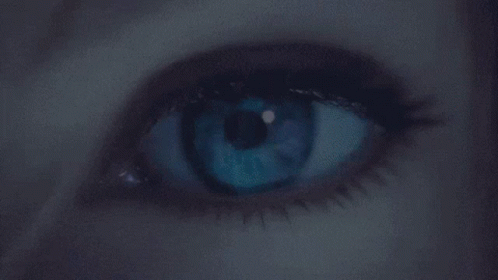
Illyrians believed in magic and spells. They believed that they can be harmed by evil forces and spirits if a person looks at them with evil intent.
Gaius Plinius Secundus, a Roman writer and philosopher, wrote that:
“Amongst Illyrians, there are those which look with an evil eye, they cast spells and can kill someone by looking at them.”
According to Plinius, Illyrians could recognise those people by them having two pupils in one eye.
The belief that bad things happen by an evil-eye spell is still widely spread in the Balkan region. If you believe that someone is trying to curse you or heard that the person cursed someone else, you should never look them in the eye.
4 notes
·
View notes
Text
Death in Illyrian polytheism

Burials
Some Illyrians buried their dead ones under the home's fireplace and gave them food and drinks regularly by lowering it down through the bars on the fireplace. The dead were believed to go to the underworld but could come out to protect the home and their loved ones, having the role of a guardian spirit.
Some Illyrians buried them in graveyards with tombstones. The process of a burial was sacred, symbolic and spiritual. Women would hold each other's hands and form a half circle, the leading woman would hold a ceramic bowl with a liquid offering in her hands. They would move side to side which is a characteristic of most postmortem dances. The men were mounting horses (horse is an important symbol and is considered a holy animal).
The grave was surrounded by small rocks in order to stop evil spirits from entering the grave and the opening to the underworld made specifically for the deceased.
Graves
Illyrians used to put items along with the deceased which they could later use in the afterlife. Most of them put things like dishes, utensils, jewelry, tools, weapons, coins, food, etc.
Heroic individuals would have an image of a warrior mounting a horse engraved on their tombstone, which would ensure that they stay heroic in their afterlife.
There was a possibility of an evil spirit disturbing the deceased so their family and friends would hold a ritual on their grave. They would get clay pots, hold it over the grave and then break it, which would disturb the evil spirit and destroy it entirely.
Snakes
Snakes were believed to be guardians of the grave. Killing a snake was seen as the worst thing one could do, especially if the snake was a guardian spirit of the deceased. Snakes would be engraved onto the tombstone and snake jewelry was buried along with the bones of the deceased.
Snakes are the most holy animals in all of Illyria. The word illyr means snake, so illyrians are believed to be snake-people and so they were called as such by Greeks and Romans. Illyrios, the ancestor of all Illyrians, was at his birth wrapped by a snake and it gave him divine powers. Snakes were worshiped because of their unusual body, silent way of moving and their ability to change skin, which reminded Illyrians of death, rebirth and immortality. Most Illyrians had a snake as a spirit guardian though other options were also possible, but every household's spirit guardian was a snake. Killing it would destroy lives and families.
Dracco and Draccena are a divine snake couple. They are gods in snake forms and were often depicted in artworks standing behind a warrior, giving him strength or protecting him, or the two of them helping the illyrian troops by killing their enemies instead. Snakes are the most important animals in this belief, and their imagery is found everywhere, from coins and pots, to armor and weapons.
Spirals
Spiral is one of the Illyrian symbols of the afterlife. Spirals on tombstones or on objects that are used in rituals symbolize the soul of a dead person.
It can also symbolize the complicated path which their soul has to go through before it gets to the underground. Goddess Anzotika is mentioned as a goddess which helps these souls through the spiral labyrinth. By carving out a spiral on a tombstone, Illyrians hoped to make the dead's path easier.
They also carved out spirals on shields and for good health and protection. Most people wore spiral shaped bracelets and jewelry with spiral symbolism.
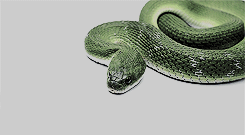
Underworld deities:
Anzotika-Guides souls to the undorworld
Irija-Souls go to her motherly embrace after death
Dracco and Draccena-It was thought that snakes and underworld deities live in deep caves. The deceased would show themselves as guardian spirits in snake form, and Dracco and Draccena are rulers of all snakes
Bindus-Believed by Iapodes to be the ruler of the underworld
Medaur-Possibly, he is often seen with spiral and snake imagery. He is also a war god, war and death are closely connected
#illyrian#illyrian gods#illyrian paganism#illyrian polytheism#paganism#polytheism#gods#deities#illyrian deities#underworld
9 notes
·
View notes
Text
Illyrian gods
↳ Illyrians never functioned as a unique ethnic entity. Rather, each tribe had their own set of gods which explains a lack of a clearly set pantheon. Some gods were more widely spread - like Medaurus, Bindus, Vidasus and were worshipped by more than one tribe.
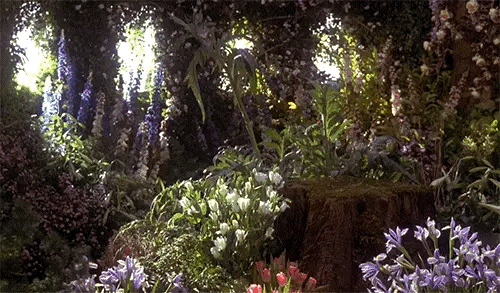
↪Liburnians believed in gods that weren’t mentioned elsewhere in the Illyrian region:
Ika (goddess of water and olives)
Sentona (goddess of fertility, agriculture and health)
Latra (also known as Great Mother, goddess of love and fertility)
Anzotika (goddess of love, motherhood, fertility, guides souls to underworld)
Aitika (goddess of agriculture, plants)
Heija (goddess of lands, justice, animals and female sexuality)
Irija (Creator Mother)
Jutosika (unknown)
↪Colapiani mainly worshipped Vidasus and Tana (protectors of forests, grasslands, wild animals and water springs) (Vidasus is the god of forests, Tana is the goddess of hunt)
↪Iapodes mainly whorshipped Bindus (god of water)
↪Histri worshipped:
Eja (goddess of fertility and love)
Trita (goddess of health)
Nebrama (goddess of darkness, fog, spells, storms)
Boria (goddess of wind)
Histrija (goddess of peace, protector of Histria)
↪Dardani worshipped:
Andin (god of family and home's fireplace)
Dardanija (personification of Dardan land)
Zbeltiurdus (supreme god)
Divine Couple Dracco and Draccena (snake gods)
Ata (personification of a house spirit which protects the home, often a fallen warrior)
Mundrit (unknown)
Taton (unknown, possibly protector of warriors and god of water)
↪Paenians worshipped Dualos, god of wine.
↪Almost all Illyrians worshipped Medaur (god of war, medicine and health), Sedat (god of mining, protector of craftsmen) was worshipped by most tribes as well.
Since Illyrians didn’t leave traces of literacy, most information about their religion was written by Romans. Romans saw characteristics of their own gods in the Illyrian ones and therefore gave them romanized names. Such examples are Silvan and Diana. Some Illyrians also started calling their gods with a Roman name so Bindus was called Neptune and Anzotika was called Venus.
Other gods which aren't tribe specific or gods with little to no information: En (fire), Perendi (thunder), Prende (love), Liber (wine), Nautrika (children), Armatus (war), Aecorna (lakes), Laburus (sailing), Redon (travel).
**I will update this list regularly, there is a lot of information that is still to be uncovered.
#illyrian#illyrian gods#illyrian paganism#illyrian polytheism#paganism#polytheism#illyrian deities#deity#deities#gods#pantheon
25 notes
·
View notes
Text
Albanian Mythological Creatures
I will be posting Albanian mythology from what I can find in old folklore tales. I will be making another post regarding Illyrian deities however this will be in incomplete list of mythological creatures taken from Albanian folklore.
- Earthly Beauty (Alb. bukura e dheut): a supernatural being in Albanian mythology, the quintessence of beauty, embodying either good or evil, though usually the latter. She can do magic, is crafty and demanding of the hero. She can indeed be won by the hero if he succeeds in performing the labours requi red of him. The Earthly Beauty figure exists in the folklore of many other cultures: cf. Mod. Greek Pentámorfi and i kalí tout ópou, Italian, Aromunian, Turkish, Kurdish, and Syrian, but is especially popular in the Balkans. The name ‘Earthly Beauty’ is most likely a taboo term for some deity of the underworld in antiquity.
- Beauty of the Sea (Alb. bukura e detit): is a type of mythological siren.
- Fates (Alb. Fatet): are figures of folk belief and fairytails. Portrayed as 3 women that come on the 3rd night at the crib of a newborn baby and decide on the baby’s fate. In the north of Albania, this job is done by Oret. Common folk believe that everything bad that happens is because of them hence the common expression “the fates wrote it so” or “the fates deemed it so”.
- Ora: protective female spirit in northern Albanian mythology whose name is often taboo. Everyone has a protecting Ora from birth onwards. It is believed that she lives in the mountains, forests, fields, riverbanks or near people and helped them by bringing good luck to those deemed as good and bad luck to the ones deemed as not good. They could have been a type of fairy which were called with endearing names such as “the happy ones” or “the good ones” but without mentioning their name. Ora is probably the most known mythological creature within Albanians. A house, tribe or person could have their own Ora. Blessings or curses are usually done with Ora’s, abandonment by Ora meant bad luck for the person or group. The name Ora translates to Clock.
- Gersheteza is considered to be a nymph of Albanian mythology, portrayed as a beautiful maiden with long hair that usually was around the rivers or lakes.
- Zana: figure in Albanian mythology. Zanas are mountain spirits who dwell near springs and torrents in the northern Albanian alps. They are courageous and often bestow their protection on Albanian warriors, but can also do evil. The name Zana translates to Fairy.
- Kulshedra: a fire-spewing snake-like female dragon usually with seven heads, comparable to the Greek hydra. She is evil and often guards the Earthly Beauty. The word kulshedra derives from Latin chersydrus and Greek khersydros, an amphibious monster.
- The dragon (Alb. llamje) is a monster which guards waterholes and springs. It is related to the Modern Greek “lamia”.
I will be updating whenever I find something new or interesting as Albanian mythology is actually pretty vast and I can’t put everything in one post! Hope you enjoyed it <3
16 notes
·
View notes
Text
Prende
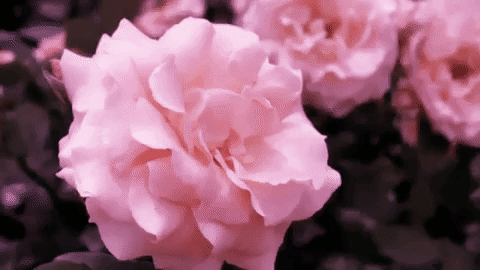
Prende is a goddess in Illyrian polytheism and Perendi's wife. She is also called Prenne, Premte and Petka and is often reffered to as "Lady Prenne" and "Lady of Beauty"
Goddess of: love, beauty, fertility, pleasure
Identified with: Venus (Roman), Aphrodite (Greek), Freyja (Norse), Lada (Slavic)
Symbols: rainbow (rainbow is believed to be "Lady Prende's belt"), flowers, mortar and pestle
Offerings: Give an offering on Friday (Friday is Prende's day), wine, sweets, chocolate, honey, makeup, perfumes, jewelry, rainbow imagery, flowers, sexual acts
Colours: rainbow, pink, red, gold, white
Incense: rose, cinnamon, strawberry, anything sweet
Devotional acts:
Celebrate Prende's festival on 26th July (Prende's devotees wore beautiful clothing and would set out mortar and pestle to represent sex, what they would grind in it is unknown), wear her colours, pamper yourself, wear a perfume scent or makeup that reminds you of her, write her a letter, be supportive of others, learn to love yourself
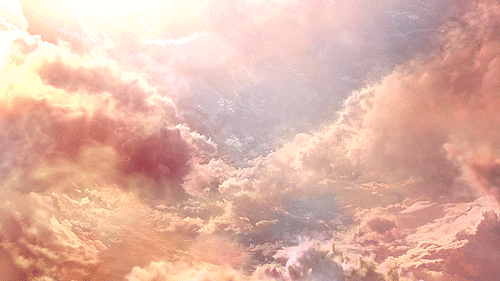
Disclaimer: Some of the things I’ve mentioned here, especially devotional acts and offerings are UPG. The reason for that is that the illyrian religion doesn’t have many texts (if any), oral tradition and UPG is the only way to collect information about these gods if we exclude a wikipedia article. I will try my best to learn and educate myself so I can spread awareness about these beautiful gods of old. If you have any more informarion feel free to share it or message me.
#illyrian#illyrian gods#illyrian paganism#illyrian polytheism#paganism#polytheism#celtic polytheism#egyptian polytheism#hellenic polytheism#illyrian god#roman polytheism#norse polytheism#modern polytheism#modern paganism#prende#venus#aphrodite#freyja#love goddess#lada
35 notes
·
View notes
Text
Perendi

Perendi is one of the gods in Illyrian polytheism and Prende's husband. Perendi is also called Zojz, Zot and Shurdi.
God of: thunder, lightning, rain, sky, weather, hailstorms
Identified with: Zeus (Greek), Perun (Slavic)
Symbols: lightning bolts, rain, thunder-stones, clouds
Offerings: prayers*, swearing an oath upon a thunder-stone (I couldn't find any texts that mention what specific food was offered to Perendi but I'm sure everything is okay as long as you do it respectfully)
*Prayers to Perendi were common when asking the gods for rain. This is a prayer to him on Spring Day asking for rain and protection of plants and cattle:
Oh Perendi,
Give us rain on winter pastures!
So that corn may be made,
And lamb grow horns!
Original text: O Perëndi, nepna shi në vërri! Të bëhet misri dhe shelegu me bri!
Thunder-stones: Illyrians believed that lightning is the "fire of the sky" and that Perendi uses lightning as his weapon. Whatever his weapon hits becomes a thunder-stone. Thunder-stones were also believed to have fallen from the sky during storms. These stones were kept in homes and gave good luck, prosperity, health and progress to the families. The heaviest type of oath was sworn upon these stones. This is an example of a man absolving himself of allegation of theft:
The thunder-stone is taken in the left hand and touched by the right one saying; "I swear by this thunder-stone that I have not stolen it, nor anyone of my house and I don't know who stole it! If I lied to you, cloud strike me!"
Swearing upon a thunder-stone can be performed today. Simply going outside and taking a rock that was out in the rain, cleansing it and offering it to Perendi will do. The oath begins with "I swear by this thunder-stone that ___" and ends with "If I lie to you, Perendi strike me." This oath was and very serious and shouldn't be taken lightly.
Colours: purple, dark purple, dark blue, gold, white
Incense: sage, white-sage, lavander, frankincense, anything rain related
Devotional acts:
collect rain and use it in your craft or as mist or keep it in your home/altar, collect pebbles, remember and thank him for the rain, listen to thunder sounds, wear colours that remind you of him, appreciate your strength (Perendi was described as a warrior), stand up for yourself

Disclaimer: Some of the things I’ve mentioned here, especially devotional acts and offerings are UPG. The reason for that is that the illyrian religion doesn’t have many texts (if any), oral tradition and UPG is the only way to collect information about these gods if we exclude a wikipedia article. I will try my best to learn and educate myself so I can spread awareness about these beautiful gods of old. If you have any more informarion feel free to share it or message me.
#illyrian polytheism#illyrian paganism#illyrian god#illyrian gods#illyrian#perendi#zeus#perun#thunder god#rain god#modern polytheism#modern paganism#hellenic polytheism#celtic polytheism#egyptian polytheism#norse polytheism#roman polytheism#slavic polytheism#paganism#polytheism#jupiter#odin#thor
27 notes
·
View notes
Text
En
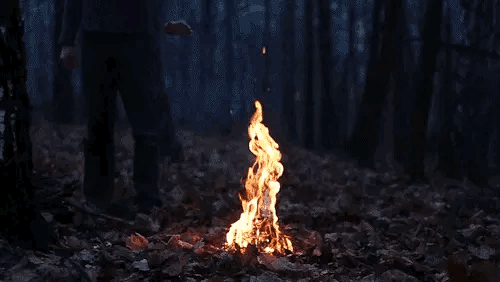
En is a god in Illyrian polytheism, also called Enj or Enji.
God of: fire, flame
Identified with: Jupiter (Roman), Agni (Hindu)
Symbols: fire, fireside, sparks, ash, burning, lighters, fireworks, Thursdays
Offerings: spicy food, burning herbs, burning incense, lighting candles, tobacco
Colours: red, orange, yellow, black
Incense: dragon's blood, any
Devotional acts:
make an offering on Thursday, research fire witchcraft, light candles, carry matchsticks, wear his colours, light a bonfire, cook, feast, throw firecrackers, enjoy fireworks, burn incense and use the ashes in your craft, learn about fire hazards
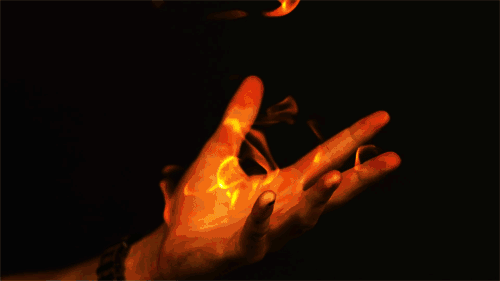
Disclaimer: Some of the things I’ve mentioned here, especially devotional acts and offerings are UPG. The reason for that is that the illyrian religion doesn’t have many texts (if any), oral tradition and UPG is the only way to collect information about these gods if we exclude a wikipedia article. I will try my best to learn and educate myself so I can spread awareness about these beautiful gods of old. If you have any more informarion feel free to share it or message me.
#illyrian god#illyrian polytheism#illyrian paganism#illyrian gods#illyrian#en#enj#enji#fire god#agni#jupiter#hellenic polytheism#norse polytheism#roman polytheism#celtic polytheism#egyptian polytheism#polytheism#paganism#modern polytheism#modern paganism
17 notes
·
View notes
Text
Bindus

God of: springs, rivers, water, seas, healing, water healing
Identified with: Njörðr (Norse), Poseidon (Greek), Neptune (Roman), Esus (Celtic)
Symbols: water, boats, oars, trident, new moon
Offerings: fish, shells, animal bones, mutton, chevon, eggs, coins
Colours: blue, deep blue, turquoise, cyan, white
Incense: anything related to the sea
Devotional acts:
go swimming, meditate by the river, collect shells, go fishing, stay hydrated, use sea salt while you cook, take a long bath, wear colours that remind you of him
Bindus' healing ritual: Wake up at the dawn and go to a river spring, after washing your face and drinking water or placing it into vessels and carrying it home, leave some coins, food, or any offering you're comfortable with next to the stream. Thank Bindus for his blessings. Illyrians also used to hang some of their clothes on the nearby branches. This ritual was used for physical, spiritual and emotional healing.

Disclaimer: Some of the things I’ve mentioned here, especially devotional acts and offerings are UPG. The reason for that is that the illyrian religion doesn’t have many texts (if any), oral tradition and UPG is the only way to collect information about these gods if we exclude a wikipedia article. I will try my best to learn and educate myself so I can spread awareness about these beautiful gods of old. If you have any more informarion feel free to share it or message me.
#illyrian#illyrian gods#illyrian god#illyrian polytheism#illyrian paganism#bindus#bindi#neptune#poseidon#njord#esus#paganism#polytheism#modern polytheism#modern paganism#hellenic polytheism#norse polytheism#roman polytheism#egyptian polytheism#celtic polytheism
30 notes
·
View notes
Text
Vidasus
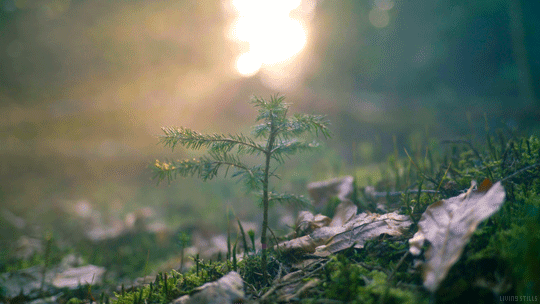
God of: nature, forests, fields, fertility, harvest, flocks, agriculture, healing, hunting
Identified with: Víðarr (Norse), Silvanus (Roman), Pan (Greek), Cernunnos (Celtic), Min (Egyptian)
Symbols: goats (Vidasus is depicted as a god that is half goat half man), herbs, nature, horns, hooves, Pan pipes
Offerings: anything from nature, plants, leaves, pinecones, branches, wooden objects, plant based foods, meat, (goat) milk, sexual acts
Colours: green, brown, white
Incense: musk, pine, birch, anything nature related
Devotional acts:
meditate in nature, clean a forest/field/riverside, collect berries, heal spiritually, sing and dance, perform sexual acts, walk in a forest, take time to appreciate nature, study herbs, remember Vidasus in the end of April and beginning of May, wear his colours, water your houseplants, practice self love

Disclaimer: Some of the things I've mentioned here, especially devotional acts and offerings are UPG. The reason for that is that the illyrian religion doesn't have many texts (if any), oral tradition and UPG is the only way to collect information about these gods if we exclude a wikipedia article. I will try my best to learn and educate myself so I can spread awareness about these beautiful gods of old. If you have any more informarion feel free to share it or message me.
#illyrian#illyrian gods#illyrian paganism#illyrian polytheism#illyrian god#vidasus#vidas#silvanus#viðarr#min#cernunnos#paganism#polytheism#hellenic polytheism#norse polytheism#egyptian polytheism#roman polytheism#celtic polytheism#modern paganism#modern polytheism#god pan
27 notes
·
View notes